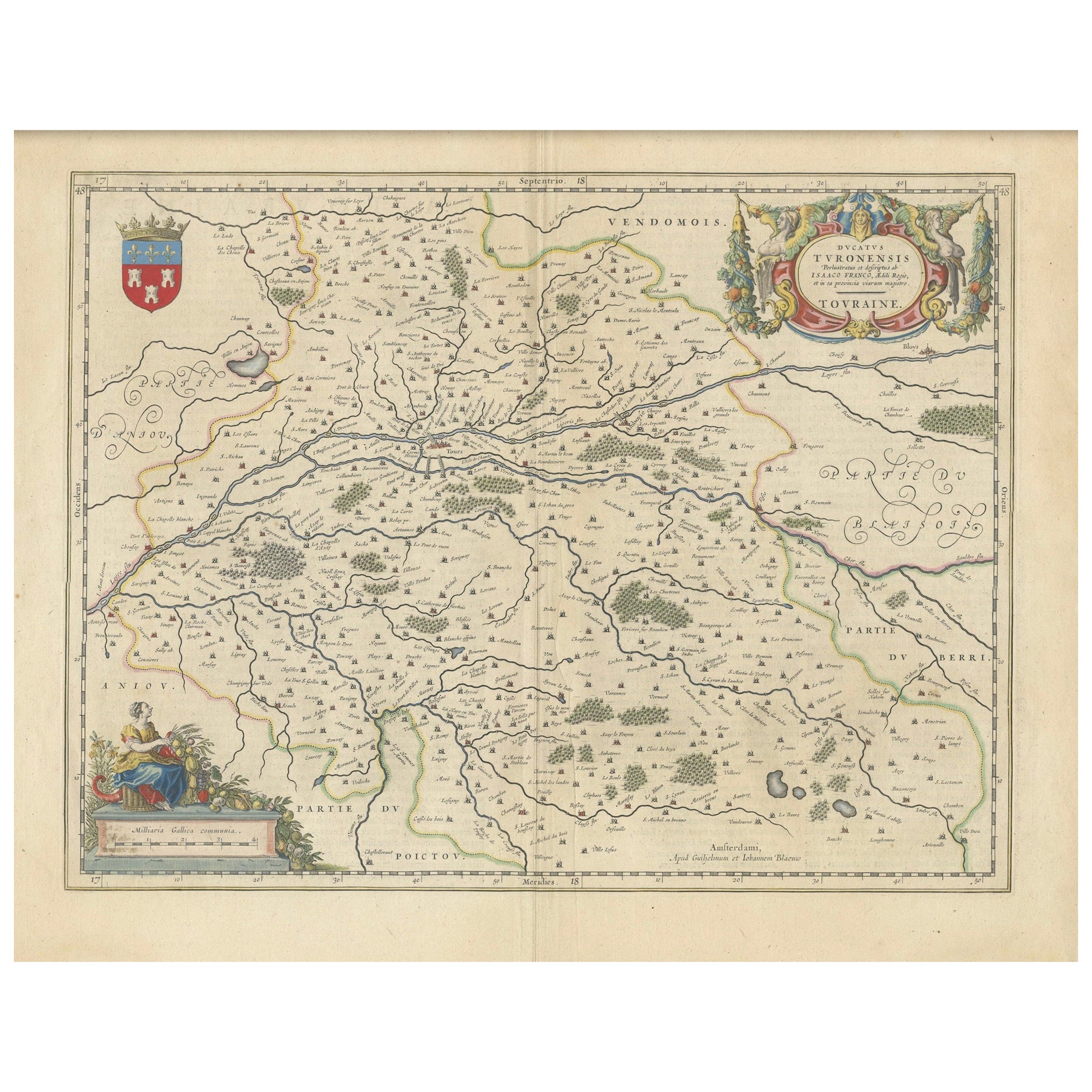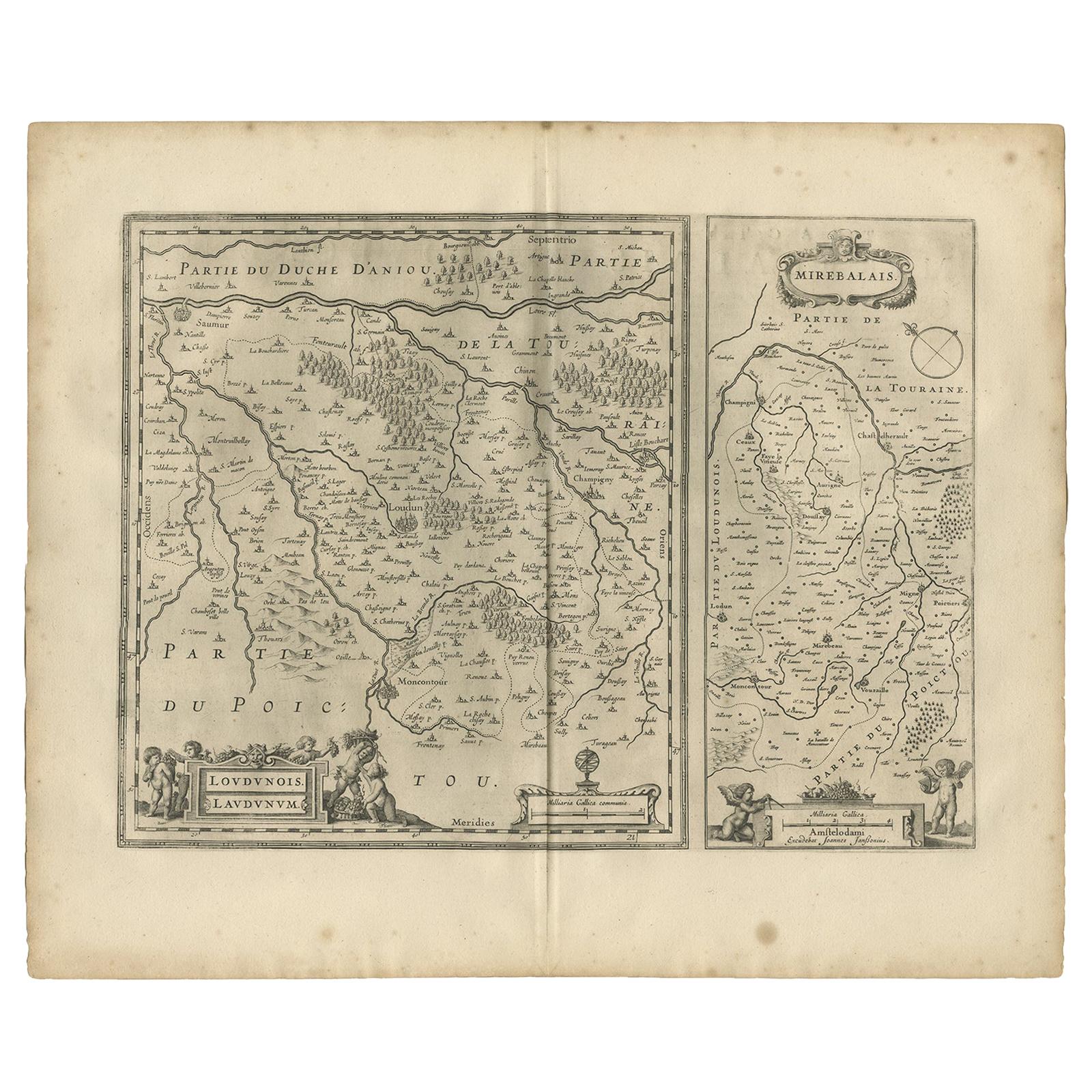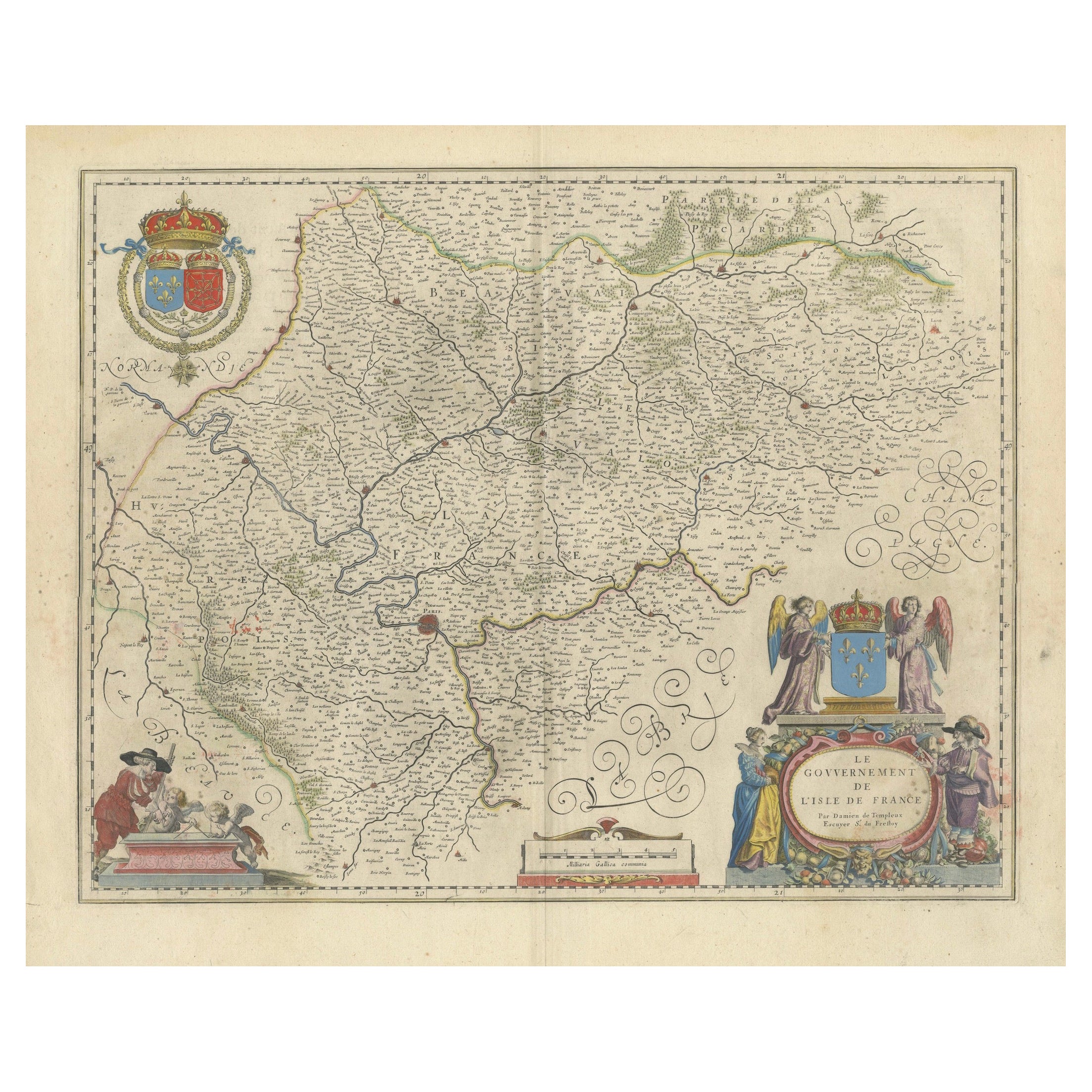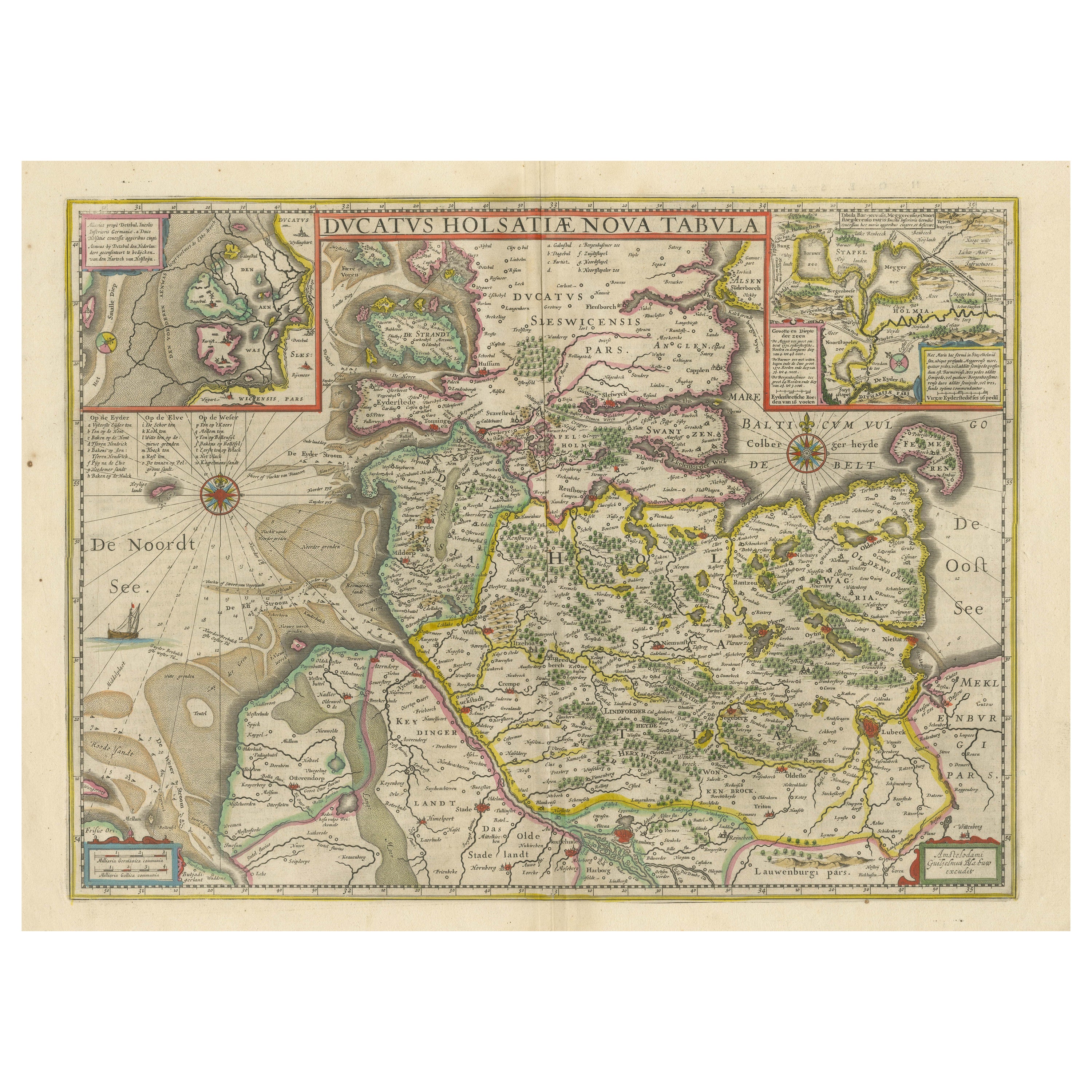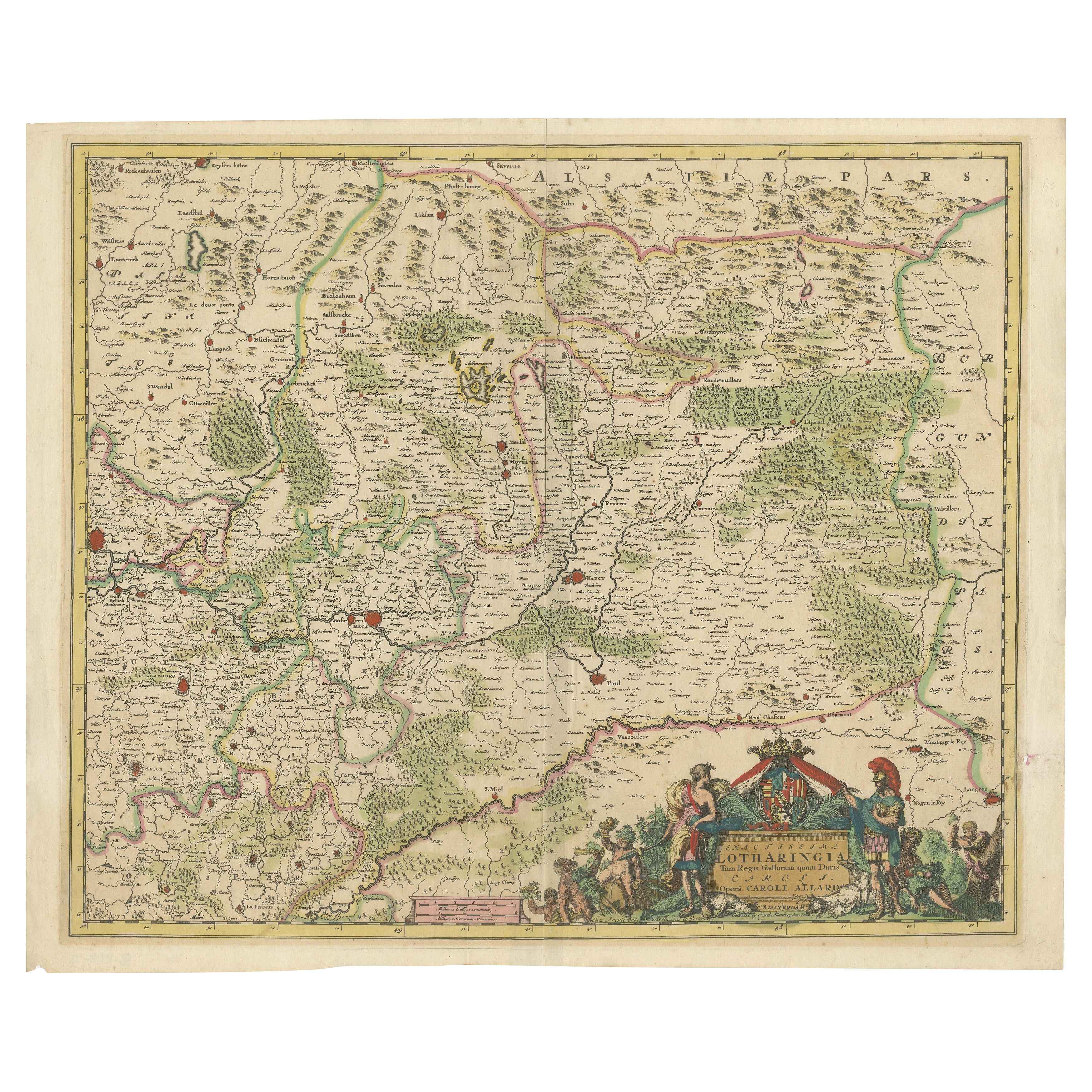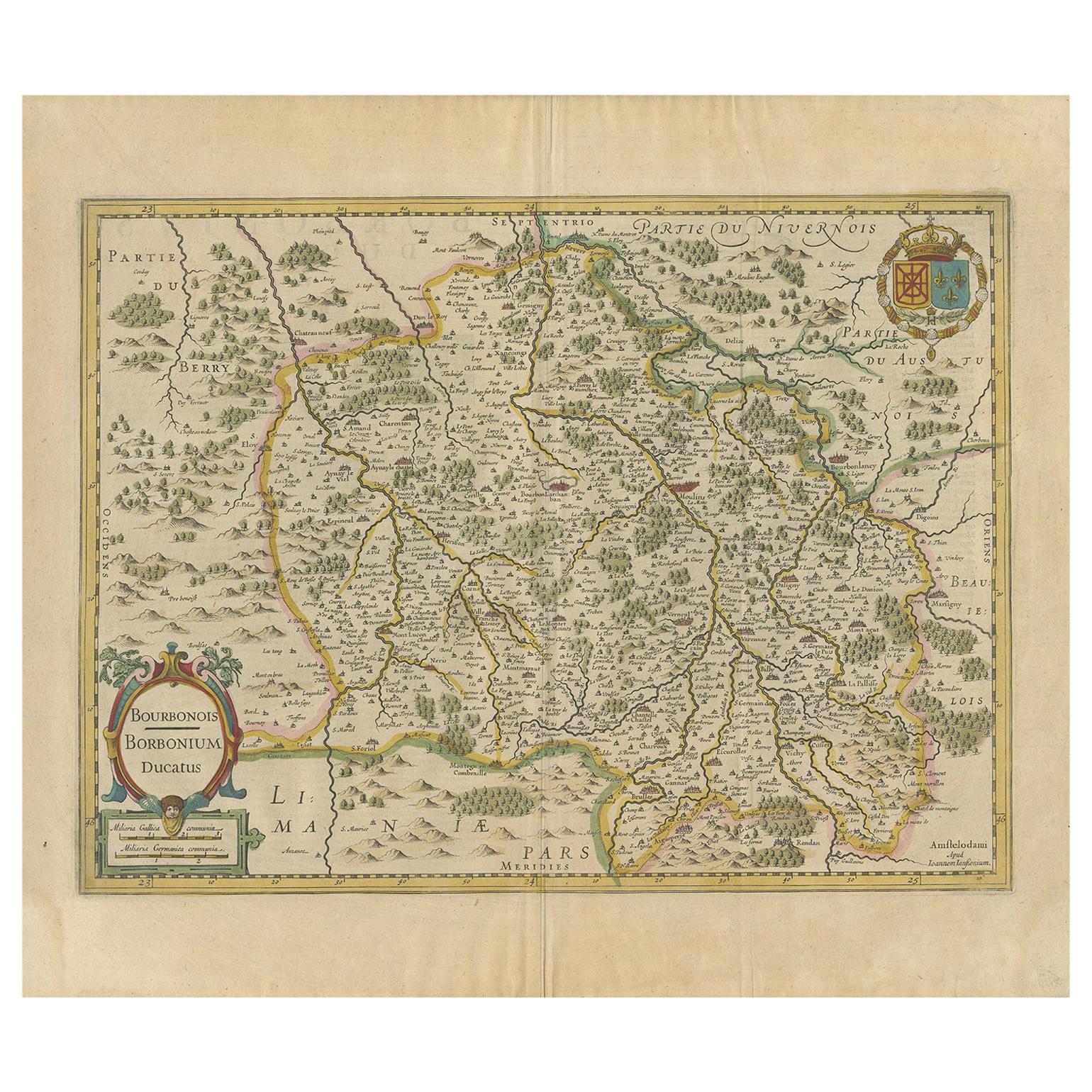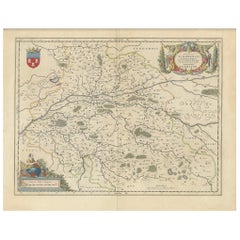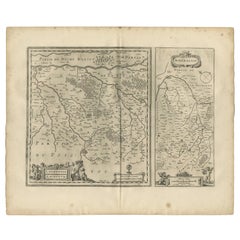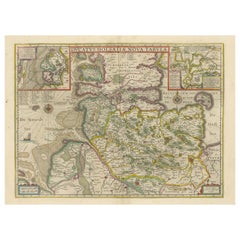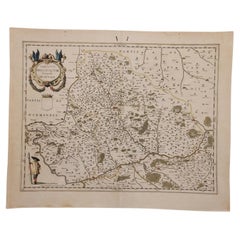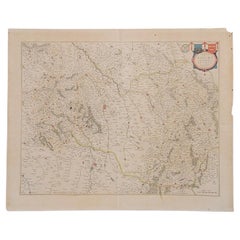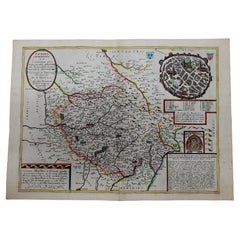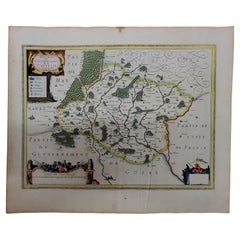Items Similar to Loudun and Mirebeau: A Cartographic Masterpiece of 17th Century France by Blaeu
Want more images or videos?
Request additional images or videos from the seller
1 of 8
Loudun and Mirebeau: A Cartographic Masterpiece of 17th Century France by Blaeu
$415.87
$519.8420% Off
£311.72
£389.6520% Off
€352
€44020% Off
CA$571.34
CA$714.1720% Off
A$637.84
A$797.3020% Off
CHF 334.22
CHF 417.7820% Off
MX$7,807.83
MX$9,759.7920% Off
NOK 4,244.60
NOK 5,305.7520% Off
SEK 4,002.12
SEK 5,002.6520% Off
DKK 2,679.55
DKK 3,349.4420% Off
Shipping
Retrieving quote...The 1stDibs Promise:
Authenticity Guarantee,
Money-Back Guarantee,
24-Hour Cancellation
About the Item
Cartography, 17th century. Willem (1571-1638) and Joan Blaeu (1596-1673), Theatrum Orbis Terrarum sive Atlas Novus..., 1635. Figure: Loudonois. Laudunum (Loudun); Mirebalais (Mirebeau)
The image uploaded is an original antique map titled "Loudonois - Mirebalais," created by Willem Janszoon Blaeu, a renowned Dutch cartographer and publisher. This map was produced between 1642 and 1661.
The map is a copper engraving, a common and highly detailed method of mapmaking during the 17th century, and it features text on the verso in French, which would have provided additional information about the regions depicted on the map.
"Loudonois" refers to the Loudun area, and "Mirebalais" refers to the Mirebeau area, both located in France. The area of Loudun is part of the Vienne department in the Nouvelle-Aquitaine region, which is known for its rich history and architecture. Mirebeau is also situated in the same department and shares similar historical significance.
The map includes several cartographic features common for the time, such as decorative cartouches, which contain the title and possibly other information, such as a scale of miles or a dedication. The artistry in the cartouches and along the borders, where figures can often be seen, is indicative of the era's style.
Blaeu's maps are known for their accuracy and detail as well as their beauty, and they contributed significantly to the body of cartographic knowledge in Europe during the Golden Age of Dutch mapmaking.
The Blaeu family, comprising Willem Janszoon, Cornelis, and Joan, were preeminent figures in 17th-century cartography and publishing. Willem Janszoon Blaeu, born in 1571 near Alkmaar, Netherlands, was an accomplished student of mathematics and astronomy under Tycho Brahe. He established himself in Amsterdam in 1596, becoming a noted globe, instrument, and map-maker. His significant contributions to maritime cartography began with a globe in 1599 and expanded to include the pilot guide "Het Licht der Zeevaert" and an appointment as Hydrographer to the V.O.C. by 1633. His establishment of the Blaeu publishing house marked a new era of atlas-making, beginning with the "Atlas Appendix" in 1630.
Competition with neighbor and fellow mapmaker Johannes Janssonius in Amsterdam prompted Willem to adopt his grandfather's nickname 'Blaeu' to distinguish himself. After his death in 1638, his sons Cornelis (whose contributions are lesser-known) and Joan continued the business. Joan, succeeding his father at the V.O.C., became famous for the "Atlas Major" and extensive town-books of the Netherlands and Italy, cementing the Blaeu legacy in cartography.
Tragedy struck in 1672 when a fire destroyed the Blaeu business, and Joan Blaeu died a year later. The remnants of their extensive collection were auctioned off, ending up in the hands of various Amsterdam booksellers and publishers. The Blaeu printing house, once a towering name in cartographic publishing, concluded its operations with a final auction in 1695.
- Dimensions:Height: 20.08 in (51 cm)Width: 23.82 in (60.5 cm)Depth: 0 in (0.02 mm)
- Materials and Techniques:Paper,Engraved
- Period:1650-1659
- Date of Manufacture:circa 1650
- Condition:Condition: Good, given age, general age-related soiling and toning but mostly outside the image. Folding line as issued. French text on the reverse. Please study scan carefully.
- Seller Location:Langweer, NL
- Reference Number:Seller: BG-13702-31stDibs: LU3054338140182
About the Seller
5.0
Recognized Seller
These prestigious sellers are industry leaders and represent the highest echelon for item quality and design.
Platinum Seller
Premium sellers with a 4.7+ rating and 24-hour response times
Established in 2009
1stDibs seller since 2017
2,513 sales on 1stDibs
Typical response time: <1 hour
- ShippingRetrieving quote...Shipping from: Langweer, Netherlands
- Return Policy
Authenticity Guarantee
In the unlikely event there’s an issue with an item’s authenticity, contact us within 1 year for a full refund. DetailsMoney-Back Guarantee
If your item is not as described, is damaged in transit, or does not arrive, contact us within 7 days for a full refund. Details24-Hour Cancellation
You have a 24-hour grace period in which to reconsider your purchase, with no questions asked.Vetted Professional Sellers
Our world-class sellers must adhere to strict standards for service and quality, maintaining the integrity of our listings.Price-Match Guarantee
If you find that a seller listed the same item for a lower price elsewhere, we’ll match it.Trusted Global Delivery
Our best-in-class carrier network provides specialized shipping options worldwide, including custom delivery.More From This Seller
View AllCartographic Elegance of Touraine: A 17th-Century Map Showing French Heritage
Located in Langweer, NL
"Ducatus Turonensis - Touraine," is a original antique historical map of the Touraine region, which is located in the heart of France, centered...
Category
Antique 1630s Maps
Materials
Paper
$463 Sale Price
20% Off
Free Shipping
Antique Map of Loudun and Mirebeau by Janssonius '1657'
By Johannes Janssonius
Located in Langweer, NL
Antique map 'Loudunois Laudunum - Mirebalais'. Decorative map of the region of Loudun and Mirebeau. This map originates from 'Atlas Novus, Sive Theatrum Orbis Orbis Terrarum: In quo ...
Category
Antique Mid-17th Century Maps
Materials
Paper
$519 Sale Price
20% Off
Mapping the Heart of France: Willem Blaeu's 17th Century Île-de-France, ca.1650
Located in Langweer, NL
This original antique map titled "Le Gouvernement de l'Isle de France" represents the Île-de-France region, which historically was one of the provinces of France and contained the ci...
Category
Antique 1650s Maps
Materials
Paper
$359 Sale Price
20% Off
Free Shipping
Original Antique Map of the Duchy of Holstein
By Willem Blaeu
Located in Langweer, NL
Antique map titled 'Ducatus Holsatiae Nova Tabula'. Original old map of the Duchy of Holstein, the northernmost territory of the Holy Roman Empire, from the mid-17th Century. To the ...
Category
Antique Mid-17th Century Maps
Materials
Paper
$1,039 Sale Price
20% Off
Historic 1690 Map of Lorraine in France by Allard - Cities of Toul, Nancy, Metz
Located in Langweer, NL
Exactissima Lotharingia - A Rare 17th Century Map of Lorraine by Carel Allard
This fascinating map of Lorraine, created by Carel Allard around 1690, is a stunning example of coppe...
Category
Antique 1690s Maps
Materials
Paper
$652 Sale Price
20% Off
Antique Map of the Region of Bourbonnais by Janssonius, circa 1640
Located in Langweer, NL
Antique map titled 'Bourbonois - Borbonium Ducatus'. Old map of the former region of Bourbonnais, France. It includes the cities of Bourbon, Moulins, Charenton, Brulles, Varennes and...
Category
Antique Mid-17th Century Maps
Materials
Paper
$472 Sale Price
20% Off
You May Also Like
1635 Willem Blaeu Map of Northern France"Comitatvs Bellovacvm" Ric.a08
Located in Norton, MA
1635 Willem Blaeu map of northern France, entitled.
"Comitatvs Bellovacvm Vernacule Beavvais,"
Colored
Ric.a008
“COMITATVS BELLOVACVM…” Amsterdam: W...
Category
Antique 17th Century Unknown Maps
Materials
Paper
1640 Joan Bleau Map Entitled"Diocecese de rheims et le pais de rethel, " Eic.a011
Located in Norton, MA
1640 Joan Bleau map entitled
"Diocecese de rheims et le pais de rethel,"
Ric.a011
OAN BLAEU
Diocecese de Rheims, et le pais de Rethel.
Handcolored engraving, c.1640.
...
Category
Antique 17th Century Dutch Maps
Materials
Paper
1594 Maurice Bouguereau Map of the Region Limoges, France, Ric0015
Located in Norton, MA
1594 Maurice Bouguereau map of the region Limoges, France, entitled
"Totivs Lemovici et Confinium Pro Uinciarum Quantum ad Dioecefin Lemo Uicenfen Fpectant,"
Hand Colored
Ric0015
Jean IV Le Clerc...
Category
Antique 16th Century Dutch Maps
Materials
Paper
1630 Pierre Petit map "Description du Gouvernement de la Capelle" Ric0010
Located in Norton, MA
1630 Pierre Petit map entitled
"Description du Gouvernement de la Capelle,"
Ric0010
Pierre Petit was the son of a minor provincial official in Montluçon. The town, in the Auver...
Category
Antique 17th Century Dutch Maps
Materials
Paper
1590 Mercator Map Entitled "France Picardie Champaigne, Ric.0001
Located in Norton, MA
Description: Published in Amsterdam by Mercator/Hondius ca. 1590.
Ric.0001
Artists and Engravers: Map : 'France Picardie Champaigne cum regionibus adiacentibus'. (Map of the french provinces of Picardie and Champagne.) Copper engraved map of the french provinces of Picardie and Champagne, showing the cities of Caen, Paris, Melun, Auxerre, Verdun, etc. Copperplate engraving on verge type hand laid paper with watermark. Description: Published in Amsterdam by Mercator/Hondius ca. 1600.Artists and Engravers: Mercator was born in Rupelmonde in Flanders and studied in Louvain under Gemma Frisius, Dutch writer, astronomer and mathematician. The excellence of his work brought him the patronage of Charles V, but in spite of his favor with the Emperor he was caught up in the persecution of Lutheran protestants and charged with heresy, fortunately without serious consequences. No doubt the fear of further persecution influenced his move in 1552 to Duisburg, where he continued the production of maps, globes and instruments. Mercator's sons and grandsons, were all cartographers and made their contributions in various ways to his atlas. Rumold, in particular, was responsible for the complete edition in 1595. The map plates...
Category
Antique 16th Century Dutch Maps
Materials
Paper
1633 Map "La Souverainete De Sedan Et De Raucourt, Et La Prevoste Ric0011
Located in Norton, MA
1653 map entitled
"La Souverainete de Sedan et de Raucourt, et la Prevoste de Doncheri,"
Ric0011
Description:
Lovely map centered on Sedan and Doncheri and the Meuze River fr...
Category
Antique 17th Century Dutch Maps
Materials
Paper
More Ways To Browse
17th C Italian Furniture
Antique Books Amsterdam
Early American Chairs
Hans Muller
Vintage Wood Table With Glass Top
19th Century Square Table
Antonio Bonet
Galle Chairs
Large Chinese Rug
1940s Vintage French Art Deco
20th Century Spanish Table
Antonio Bellini
Retro Fiberglass Furniture
Shipping Crate
Antique Oushak Carpets
Blue Coffee Tables
German Bauhaus Posters
1945 Chair Juhl
